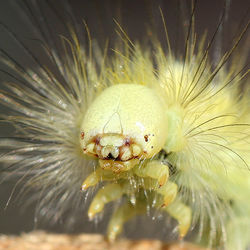Lepidoptera
| Vernacular names | |
|---|---|
| • Deutsch: | Raupen Falter Lepidopteren Schmetterlinge |
| • Español: | orugas lepidópteros mariposas |
| • Français: | chenilles lépidoptères papillons |
Groups of Lepidoptera
|
|---|
Noctuoidea
|
| Erebidae |
| Noctuidae |
| other families |
Pyraloidea
|
| Crambidae |
| Pyralidae |
Other groups of Lepidoptera
|
| Gelechiidae |
| Geometridae |
| Gracillariidae |
| Lasiocampidae |
| Sesiidae |
| Tortricidae |
| other Lepidoptera families |
Lepidoptera (moths, caterpillars)
The Lepidoptera are the 2nd largest order of insects (after the Coleoptera) and are characterized by the large, often colourful wings and the presence of overlapping scales on the wings and the body. The mouthparts of the adult are often developed into a long proboscis, designed to suck honey from flowers. There is no clear taxonomical division between butterflies (many active during the day and colourful) and moths (mainly active during the night and less colourful). Many species are good fliers and some form swarms which migrate distances of hundreds of kilometres.
The caterpillars or larval stages are worm-like with a well developed head and chewing mouthparts. They feed on plants or stored products and the order includes many serious crop pests. The thorax of the caterpillars is rather short with three pairs of legs while the elongated abdomen contains 2-8 pairs of fleshy prolegs which are important for movements. The two main types of feeding habits include:
- species which feed on leaves, they are sometimes hidden in a mass of webbing
- species which bore into fruits, branches, or the stem of plants.
Note:
This group refers to plant pests only, for other groups of Lepidoptera see:
To navigate among the pages of these groups use the box on the top right or click on a family in the list below. Of course, you always have the option of using the wiki search function.
Families of Lepidoptera (plant pests):
